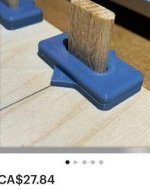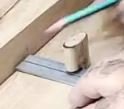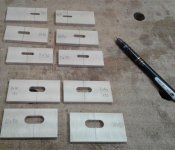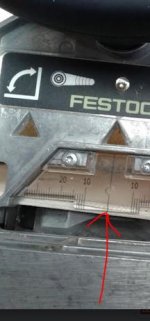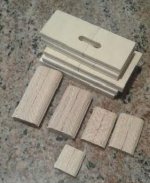Sometimes we need to find the centerline of a milled mortise (to transfer the line or to repeat the cut to fix an error, e.g.). Someone sells a 3D printed product (about $30 Cdn for a pack of 6 of one tenon size -- so you need to spend $150 if you want to cover all the sizes). Another fellow woodworker cut a tenon in the middle partially and used it with a square to transfer centerlines.
I found it simplest to make a bunch of center finders by using the paddles or spring stops. So I marked pencil lines around the blocks 37mm from the edges, and cut the mortises. The pencil lines give the centers.
[attachimg=3]
The right paddle was found to be off, not exactly 37mm from the cutter's center like the left paddle, so I replaced it before continuing.
[attachimg=4]
I found it simplest to make a bunch of center finders by using the paddles or spring stops. So I marked pencil lines around the blocks 37mm from the edges, and cut the mortises. The pencil lines give the centers.
[attachimg=3]
The right paddle was found to be off, not exactly 37mm from the cutter's center like the left paddle, so I replaced it before continuing.
[attachimg=4]

